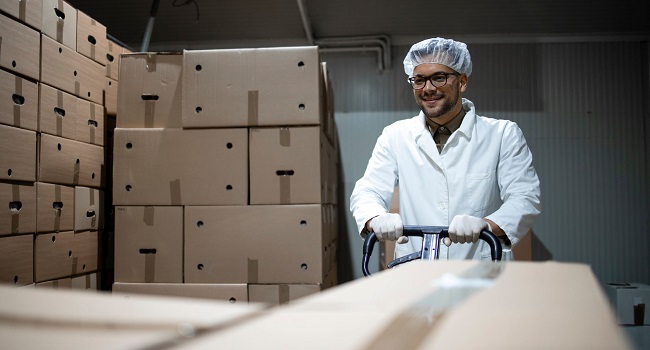A cold storage facility is a space that stores food and other goods at temperatures below freezing. This is done to keep the food fresh, especially for meat products, which can spoil if left at room temperature for too long.
Notably, maintaining cold storage facilities is essential to ensure they operate efficiently. This guarantees the good quality of the goods stored in them. Without adequate maintenance, you could face significant problems with your storage and distribution center.
Fortunately, you can research online to learn more about how cold storage facilities work and ways to maintain them properly. Also, there are reputable cold storage companies you can partner with for state-of-the-art cooling facilities to prolong the freshness of your perishable items. Most offer a short-term hold of products, so you can consider this storage option instead of overstocking your freezer.
With that in mind, here are some essential tips to get you started with cold storage maintenance:
1. Inspect The Refrigeration System
The refrigeration system is an essential part of any cold storage system. Therefore, it should be constantly monitored to ensure it’s running smoothly. The following are the essential components to inspect:
- Check the effectiveness of your refrigerator sensor: You can use a different professional thermometer to measure the accuracy of the refrigerator sensor. If you measure the coldness of the refrigerator and there’s a discrepancy between the temperature levels of the two devices, it means the refrigerator sensor needs to be fixed. Therefore, it’s necessary to calibrate or replace it.
- Inspect your compressor: Some aspects to check include the noise created, electricity consumed, and the cold produced. An unhealthy compressor makes too much noise and overheats. In that case, you should fix the problem right away. Alternatively, you can contact your cold store for a replacement if your refrigeration equipment has a warranty.
- Check the evaporator’s health daily: The evaporator is situated inside a cold storage facility. It absorbs heat from the stored products. You should inspect it daily, primarily focusing on the air temperature, the sound produced, water or oil leakage, and mold growth.
If it’s loud or makes an unusual noise, produces hot air, and there’s water or oil leakage, you should repair it as soon as possible. However, if it’s extremely faulty, you should consider getting a replacement.
- Do a condenser quality check: The condenser is the outdoor portion of the refrigeration system, and its primary task is to cool down the refrigerant fluid. The condenser is healthy if the pipes leading to the refrigerant outlet are cooler. If they’re hot, it indicates the equipment isn’t working correctly and should be repaired.
Notably, you should perform a monthly functionality test of the overall cold room refrigeration system and fix any malfunctions. And while doing the repairs, working with a professional contractor with advanced knowledge about how cold storage facilities work is vital.
2. Check All Electrical Connections
Inspecting all electrical connections in your cold storage facility is essential to ensure the proper flow of current. If some parts of the cold storage system don’t receive electricity, you can contact an electrician to find and repair the fault. Also, there are instances where the fuses may fail. In that case, you should ask the electrician to replace the fuse.
3. Keep The Facility Clean
You should regularly clean your cold storage facility using the appropriate cold room cleaning products. This prevents the growth of microorganisms, such as bacteria or mold, that may contaminate the stored items. Here are other ways to keep your cold storage facility mold-free:
- Use a clean and fully functioning vent
- Check for air leaks and repair them. Air leaks may cause temperature fluctuations making way for mold to grow and thus result in product damage.
- Remove expired food items to prevent the spread of mold spores
- Regularly clean cold room door seals
Generally, maintaining the interior hygiene and cleanliness of your cold storage system improves its efficiency.
4. Monitor The Humidity Level Of The Cold Room
It’s necessary to monitor the humidity level of the cold storage facility daily. If it exceeds the standard levels, it can cause mold or bacteria and, thus, product spoilage. Digital hygrometers are used to check humidity in most cold rooms and refrigerated warehouses.
However, it’s good to monitor the accuracy of the hygrometer itself using a professional hygrometer. If the two devices measure different humidity levels, it indicates your hygrometer isn’t fully functional. So, you should calibrate or get a new one.
5. Inspect The Walls, Floor, And Ceiling Of The Cold Room For Ice
Check your cold room’s walls, ceiling, and floor for a build-up of ice and eliminate it. Ice removal is essential, especially if you’re using the space to store vegetables and fruits since any amount of ice can spoil them.
Large ice crystals cause cell wall damage and water migration; thus, fruits and veggies become dry and shriveled. So, eliminating ice from cold room surfaces is crucial to ensure quality food.
Also, if you spot a pile of ice, your temperature sensor, compressor, or evaporator may not be functioning well. Therefore, you should inspect the equipment and make the necessary repairs.

Conclusion
Continuous maintenance is critical to the success of your cold storage facility. Well-cared-for storage facilities operate at total capacity to protect the stored products. Therefore, the above are some maintenance tips to consider. Most importantly, immediately fix all problem areas to promote better performance and keep operations going.




























